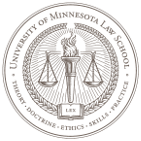by Roma Patel, UMN Law and Public Health Student, MJLST Staff
Years ago, the Supreme Court ruled that inventors are not entitled to federal patent protection for discoveries of laws of nature. The Court said, “natural phenomena are the basic tools with which every would-be inventor starts, so locking up the right to use them in a monopoly held by a specific patent owner will frustrate others who might want to look for new ways to interpret [those] phenomena.”
On June 13, a unanimous decision by the Supreme Court ruled that, “a naturally occurring DNA segment is a product of nature and not patent eligible merely because it has been isolated, but complementary DNA is patent eligible because it is not naturally occurring.” The ruling, authored by Justice Thomas, was issued in Association for Molecular Pathology v. Myriad Genetics, a landmark case bringing an end to the practice of patenting isolated parts of the human genome as they originally exist.
The defendants, Myriad Genetics, discovered and then patented the location, sequence and mutations of BRCA1 and BRCA2. Both genes are highly associated with a risk of breast and ovarian cancers. If Myriad’s patent claims were found valid, Myriad would have gained the exclusive right to isolate an individual’s BRCA genes–a necessary step in conducting diagnostic testing for the cancers.
The Plaintiffs, represented by the American Civil Liberties Union and the Public Patent Foundation, consist of a coalition of patients and researchers from University of Pennsylvania, New York University, Columbia, Yale and Emory. Plaintiffs claimed that Myriad’s patent monopoly was invalid under 35 U.S.C. § 101 and that patents on isolated natural genetic sequences would restrict medical research, limiting progress. From a patient’s perspective, such exclusive patent rights would make getting a second opinion regarding genetic predisposition almost impossible. Additionally, exclusivity would keep the cost of testing BRCA 1 and 2 higher through the absence of competitive pricing.
While patient’s rights advocates and research and educational institutions applaud the decision, many are critical. Attorney and chemistry professor Bernhard Saxe stated that the Court, “trivializes chemistry and elevates biological “information” over chemical structure in patent law, and that usurps the role of Congress and creates a new class of patent-ineligible subject matter by judicial fiat.” In Issue 2 of MJSLT’s 12th volume, Peter Edwards noted that, “It is unwise to blithely remove patent eligibility from fields in which incentives for innovation have a dramatically positive effect on the population as a whole. Patent law was established to incentivize inventions that are useful to the public, while still allowing fair access to innovations. Because the public benefit resulting from incentivizing gene patents far outweighs the potential for public loss, it is in the country’s best interest to structure and interpret patent law to find genes and methods employing them patent eligible.”
Other case outcomes, Mayo v. Prometheus and In re Bilski have determined most diagnostic claims are not patentable. Now that the Court has determined natural isolated genetic sequences are also not patentable, Myriad’s business model, an enterprise predicated on exclusive administration of the BRCAnalysis test to diagnose breast and ovarian cancers, will be difficult to sustain. Biotechnology businesses driven by research and development and investors may face less of an incentive to innovate, which could mean fewer diagnostic tests available on the market. However, multilateral ownership of such natural phenomena could possibly drive more tests to market at lower prices and provide for more accuracy due to alternate testing options. Time will tell us the precise effect this ruling will have on patients, but for now the road beyond the Myriad decision remains unclear.


 The America Invents Act (AIA) was signed into law in 2011 and fully went into effect on March 16, 2013. The AIA resulted from efforts to strengthen the US patent system and bring it in conformity with global patenting standards. One of the aims of the AIA was to reduce post-grant litigation related to patent validity. It is common for alleged infringers to
The America Invents Act (AIA) was signed into law in 2011 and fully went into effect on March 16, 2013. The AIA resulted from efforts to strengthen the US patent system and bring it in conformity with global patenting standards. One of the aims of the AIA was to reduce post-grant litigation related to patent validity. It is common for alleged infringers to  As predicted in
As predicted in In just about one month the most monumental provision of the
In just about one month the most monumental provision of the Since at least 1999 when
Since at least 1999 when  In the past two years, two of the world’s mobile technology leviathans, Apple and Samsung, have engaged in multibillion dollar patent infringement litigation. Specifically, Apple has been seeking damages and fighting for injunctions on several of Samsung’s mobile products in markets across the globe. On August 24, 2012 in the United States,
In the past two years, two of the world’s mobile technology leviathans, Apple and Samsung, have engaged in multibillion dollar patent infringement litigation. Specifically, Apple has been seeking damages and fighting for injunctions on several of Samsung’s mobile products in markets across the globe. On August 24, 2012 in the United States, In the past two years, two of the world’s mobile technology leviathans, Apple and Samsung, have engaged in multibillion dollar patent infringement litigation. Specifically, Apple has been seeking damages and fighting for injunctions on several of Samsung’s mobile products in markets across the globe. On August 24, 2012 in the United States,
In the past two years, two of the world’s mobile technology leviathans, Apple and Samsung, have engaged in multibillion dollar patent infringement litigation. Specifically, Apple has been seeking damages and fighting for injunctions on several of Samsung’s mobile products in markets across the globe. On August 24, 2012 in the United States,